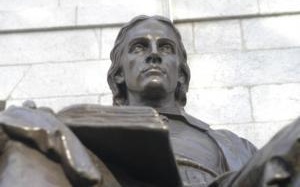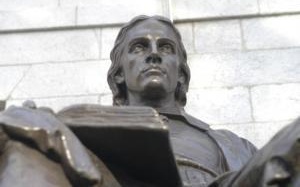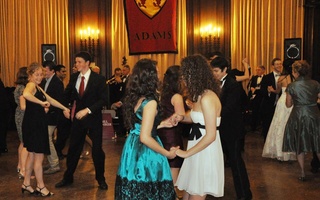In addition to the connecting entryway, the dwellers of B-51 have made use of a secret stairwell—which is otherwise concealed behind an activated fire door—to conveniently gain access to another Kirkland room.
The women of B-51 have established a quirky protocol for entering the adjoining suite, which is inhabited by several Kirkland men.
“The rule is, you’re supposed to knock, yell [the resident’s] name, and wait for a response,” said B-51 resident Basima A. Tewfik ’11. She added that when she once failed to follow this specific sequence, she had to provide candy corn to make up for the infraction.
A SIGN OF THE TIMES
Harvard’s Houses have become a hallmark of the nearly four centuries-old institution, despite the fact that they were only constructed relatively recently, in the first half of the 20th century.
The neo-Georgian style, which derives its name from the first four British monarchs of the House of Hanover (Georges I-IV), takes its inspiration from the highly symmetrical and ordered style of Georgian architecture in 18th- and 19th-century England.
Neo-Georgian architecture in the early 1900s eschewed features of modern architecture such as steel and cement, favoring instead the stately red brick and sash windows that were more characteristic of an earlier time.
But seemingly inexplicable secret rooms and hidden doorways may have once served a contemporary purpose for residents of Harvard College.
In 1932, when Adams House completed its conversion into an upperclassman house, Americans were still struggling against the constraints of more than a decade of Prohibition. Hidden rooms, including the one in Adams C-57, could have functioned as a hideout for producing and consuming moonshine liquor, as was a common practice in buildings across the country at the time.
Secret staircases, such as the one in Kirkland B-51, could have served as service stairs. Unlike the public stairs in plain view in several Houses, servants most likely traversed those staircases hidden from sight as they waited on their wealthy undergraduate patrons.
But, according to Hays, architectural quirks like moving bookshelves and tucked-away rooms were probably built more for aesthetic than practical reasons.
“Who wouldn’t want a secret room or secret passage?” he said. “My guess is that these features in the Harvard houses are for pure pleasure—more elaborate versions of reading alcoves and window seats that were also enjoyed.”
According to Hays, the priorities of architects who designed and constructed neo-Georgian buildings in the first half of the 20th century were markedly different from those of architects today.
“In past times, architects and their patrons expected their buildings to have more mystery and wit than we do today,” Hays said.
AN ENHANCED VISION
Read more in News
SEAS Dean Charts Course

















